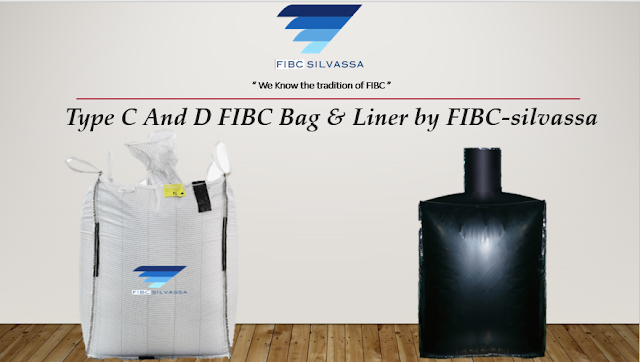Type C And D FIBC Bag & Liner by FIBC-Silvassa
Type C Bag:
Type C FIBCs, also known as conductive FIBCs or ground-able FIBCs, are made from non-conductive polypropylene fabrics interwoven with conducting threads traditionally sewn in a grid pattern. These conducting threads must be electrically interconnected as well as connected to a designated ground/earth during filling and discharging. This connection to the ground/earth during filling and discharging is imperative to the safe use of Type C bulk bags.
Type-C Liner:

Type D bags one of the most versatile bags. Like other types of FIBCs, anti-static bags come with lifting loops and discharge openings. It could be forklifted and maneuverer easily and is capable of holding huge volumes of materials.
You can safely transport flammable products in them even where grounding is not possible. Anti-static bags can also be used for transporting hazardous material even if flammable solvents or gases are likely to be present during loading and unloading.The common uses include storing of chemicals, petrochemicals, minerals, fertilizers, grains, pigments, plastics, construction materials, and pharmaceuticals.
These bags are Eco-friendly as these can be reused and recycled.
Type D Liner
Type D Liner is specially made to control static electricity. Electrostatic electricity is the result of the imbalance between electric charges that exists on the surface of the substance and within it.
Type D Liner, safe packaging of combustible materials and handling products in combustible or flammable atmospheres becomes a breeze. It is desirable not to use the bag if its surface shows sign of contamination or is covered with grease, water and other conductive substances.





Comments
Post a Comment